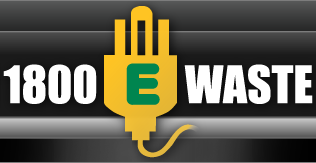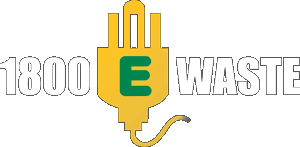Electronic equipment has become completely disposable, it gets faster, smarter and cheaper everyday. If something breaks, it’s often cheaper to buy a new one than fix the old one.
That’s all well and good, but the real question is what happens to the ‘old ones’? Don’t just think about the big ticket items like computers and mobile phones, stop and think about all of the other electrical equipment in your household…. alarm clock, blender, microwave, fridge, calculator, toys, video games, cameras, hair dryer…. and so the list goes on. As electronic equipment, of every kind, becomes more and more a part of our day-to-day lives we need to make recycling electronic waste (ewaste) a top priority. Here are just some of the reasons why;
- According to the Australian Bureau of Statistics ewaste in Australia is estimated to be growing at more than three times the rate of general municipal waste.
- Unfortunately for decades this toxic ewaste has filled our landfill sites, leaching dangerous metals such as lead, cadmium and mercury into the surrounding soil, groundwater and ultimately ending up in us. The health effects of such heavy metals in humans can be devastating, research shows tumours, mental health disorders and cancer are just some of the results.
- According to the Environment, Protection and Heritage Council (EPHC), Australians discarded 16.8 million electronic devices in 2007/8. Only 9 per cent of this was recycled while 88 per cent, or 14.7 million devices, were sent to landfill. The remainder was exported.
- Landfill is not the only issue caused by lack of recycling, it is reported that Australia has been exporting increasingly large amounts of ewaste to China, India and other Asian countries, estimated to be worth about $20 million a year. Tragically the recycling conditions in these countries are often sub-standard resulting in innocent adults and children being exposed to harmful toxins.
- On the upside, recycling ewaste not only diverts toxic metals from landfill but it also means many valuable materials can be reused. Recycling reduces the amount of waste as well as the mining of raw materials – in essence recycling is “above ground mining”.
- According to the EPHC, if 75% of the 1.5 million televisions that are discarded annually were recycled, this would amount to a national saving of approximately 23,000 tonnes of CO2 equivalents, 520 mega litres of water, 400,000 gigajoules of energy and 160,000 cubic metres of landfill space.
- Creating secondary raw materials, ie recycling, results in huge energy savings compared to creating primary raw materials. For example, recycling steel into a secondary raw material uses 74% less energy than the production of the primary product. Recycled Aluminium uses 95% less, Copper 85% less, Lead 65% less and Plastics 80% less – it’s a win, win, win scenario – we protect precious resources, divert usable materials from landfill and conserve energy all at the same time!
At 1800Ewaste we are passionate about diverting as much electronic equipment from landfill as possible. We believe in prolonging the lifespan of valuable materials by recycling all that we can, currently 95-98%, by weight, of all the materials we collect are recycled for future use. Our service is professional, fast and reliable, we’ll come to you, collect your ewaste and deliver it to the appropriate recycling facility. 1800ewaste only recycles with ISO14001 accredited Australian recycling facilities.
How to get your electronic waste collected and recycled.
If you’re interested in having your ewaste recycled please give us a call today.
1800EWASTE, 1800 392 783

